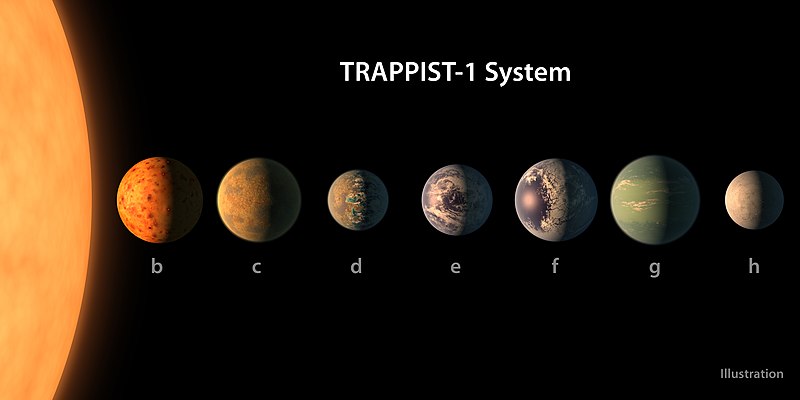فائل:PIA21422 - TRAPPIST-1 Planet Lineup, Figure 1.jpg

اس نمائش کا حجم: 800 × 400 پکسلز۔ دیگر تصمیمات: 320 × 160 پکسلز | 640 × 320 پکسلز | 1,024 × 512 پکسلز | 1,280 × 640 پکسلز | 2,560 × 1,280 پکسلز | 6,000 × 3,000 پکسلز۔
اصل فائل (6,000 × 3,000 پکسل، فائل کا حجم: 2.63 MB، MIME قسم: image/jpeg)
فائل کا تاریخچہ
کسی خاص وقت یا تاریخ میں یہ فائل کیسی نظر آتی تھی، اسے دیکھنے کے لیے اس وقت/تاریخ پر کلک کریں۔
| تاریخ/وقت | تھمب نیل | ابعاد | صارف | تبصرہ | |
|---|---|---|---|---|---|
| رائج الوقت | 18:39، 22 فروری 2017ء |  | 6,000 × 3,000 (2.63 MB) | PhilipTerryGraham | User created page with UploadWizard |
روابط
درج ذیل صفحہ اس فائل کو استعمال کر رہا ہے:
فائل کا عالمی استعمال
مندرجہ ذیل ویکیوں میں یہ فائل زیر استعمال ہے:
- af.wikipedia.org پر استعمال
- ar.wikipedia.org پر استعمال
- bn.wikipedia.org پر استعمال
- ca.wikipedia.org پر استعمال
- el.wikipedia.org پر استعمال
- en.wikipedia.org پر استعمال
- es.wikipedia.org پر استعمال
- et.wikipedia.org پر استعمال
- fi.wikipedia.org پر استعمال
- fi.wikibooks.org پر استعمال
- glk.wikipedia.org پر استعمال
- id.wikipedia.org پر استعمال
- ja.wikipedia.org پر استعمال
- ku.wikipedia.org پر استعمال
- lt.wikipedia.org پر استعمال
- ms.wikipedia.org پر استعمال
- my.wikipedia.org پر استعمال
- nl.wikipedia.org پر استعمال
- pnb.wikipedia.org پر استعمال
- pt.wikipedia.org پر استعمال
- ro.wikipedia.org پر استعمال
- tl.wikipedia.org پر استعمال
- tr.wikipedia.org پر استعمال
- uk.wikipedia.org پر استعمال
- vi.wikipedia.org پر استعمال




